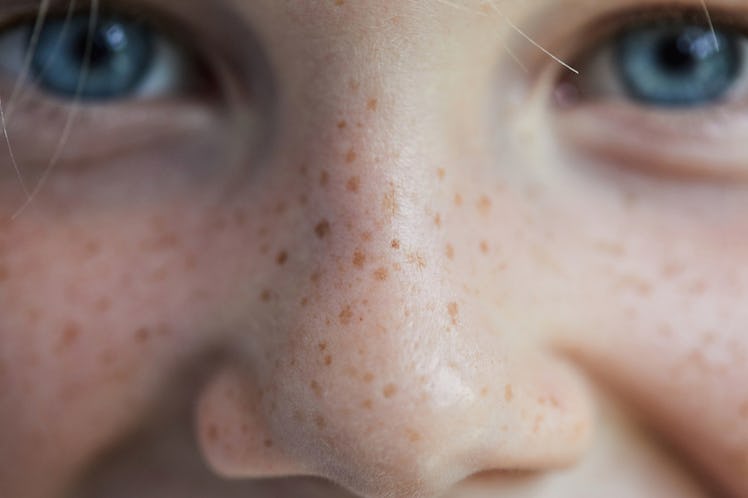
You Can Get Sunburned On Your Eyes, & No, It Doesn't Just Happen In The Summer
Nothing punctuates a long summer day quite like coming home to see that you have a full-body sunburn on roughly 90 percent of your skin. Everyone's experienced one of those long, sleepless nights, where you're so hot because of the burn, and you can't find a comfortable way to sleep, and your skin ends up peeling off in big, quarter-size shapes, all while your parents lecture you on being more cognizant of wearing sunscreen. Sunburns can be bad enough on their own, but getting a sunburn on your eyes is a whole new level of pain that I'm willing to bet you didn't even know could happen at all.
As it turns out, getting sunburn on your eyeballs is actually a thing — and no, it's not another freaky-fictional Black Mirror plot line. Actress Busy Philipps recently brought the strange medical matter into the spotlight when she posted an Instagram that revealed she was in the hospital with severe pain, which she described as feeling like "shards of glass in both my eyes." It turns out, she wrote in the Instagram post, she's been diagnosed with something called "photokeratitis," which she said has come as a result of overexposure to bright lights and the sun. Yikes, and here I am thinking getting sunburn on my thighs feels like actual hell on earth.
So what the heck is photokeratitis, and how does it happen?
According to the American Academy of Ophthalmology (AAO), photokeratitis is "a painful eye condition that occurs when your eye is exposed to invisible rays of energy called ultraviolet (UV) rays, either from the sun or from a man-made source."
Photokeratitis can occur through sun reflection both directly and indirectly, meaning it can even happen when light reflects off of objects like water, snow, sand, and ice. In other words, it's not just something to be wary of when summertime comes.
This condition can also happen if you try to watch a solar eclipse without wearing the proper glasses, which sounds obvious, but probably happens to a lot of unprepared people, such as myself (I swear I only tried to look for, like, a second).
According to the AAO, symptoms of sunburned eyes can include that scary glass-shard feeling that Philipps described, as well as redness, soreness, sensitivity, blurred vision, headaches, temporary vision loss, and eyelid twitching. All of these symptoms will most likely alarm you when they start to happen since vision is a pretty obvious aspect of your health to pay attention to, so you should definitely talk to a doctor if you start to notice any of these things happening in your own body.
As you might have guessed, the best way to avoid photokeratitis is to protect your eyes from extended exposure to bright lights, whether direct or indirect.
If you've been looking for a sign to buy that gorgeous pair of sunglasses, this is it. It's for your health, after all.
Better yet, splurge for the polarized option. According to All About Vision, polarized lenses contain a special filter that blocks intense reflected light, which helps people in situations like skiing or sailing, where the light might reflect off of the water or snow and create a massive glare that hurts your vision and, in the worst case scenario, could lead to something like photokeratitis.
If you do get photokeratitis, the treatment will probably involve eye drops, pain relievers, and a cold washcloth, so you most likely won't have to deal with surgery or anything extreme like that. But the threat of a glass-shard feeling is definitely enough, in my opinion, to wear sunglasses from now to eternity.